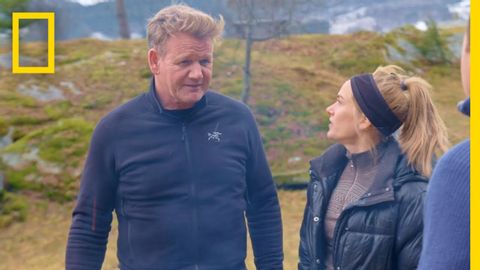傳統挪威美食|戈登-拉姆斯:未知的世界。 (Traditional Norwegian Cuisine | Gordon Ramsay: Uncharted)
 沒有此條件下的單字
沒有此條件下的單字- v.t./i.伸展(肢體等);拉長
- n.伸展;一段路程、區域;物品連續排列;一段時間;階段
- n. (c./u.)條件;條款;期間;期限;學期;術語;關係;項;妊娠期;任期
- v.t.命名
US /dɪˈvɛləp/
・
UK /dɪ'veləp/
- v.t./i.詳盡闡述;建立;打造;(使)成長;發展;沖洗(底片);罹患;產生;培養;發展
US /vəˈraɪɪti/
・
UK /və'raɪətɪ/
